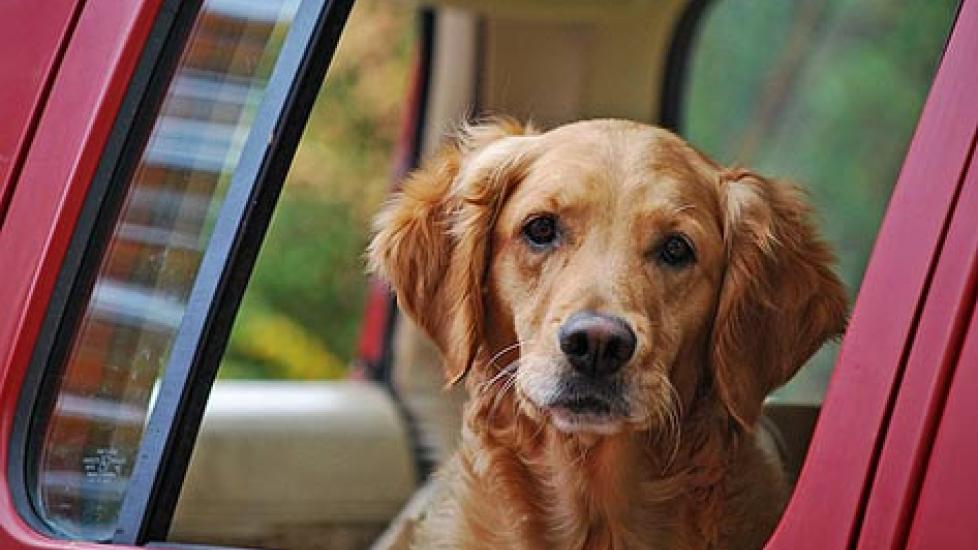Top 10 Pet Travel Tips
By Yahaira Cespedes
If your life includes pets, then you know that making travel plans (whether for business or pleasure) includes deciding whether to take them with you or leave them in the care of a sitter or boarding facility. Like many pet owners, you’d like to take your pet with you but don’t know to prepare for pet-friendly travel. Here is a checklist of ten tips on preparing to travel with your pet.
#10 Identification Tags
No matter how you choose travel, it is vital to outfit your pets with proper identification prior to setting out. After all, if you should become separated from your pet, their identification is the surest way they’ll find their way back to you.
#9 Permanent Identification for your Pet
In addition to fitting your pets with I.D. tags, your veterinarian may recommend fitting them with a microchip. You can also have your pet tattooed with the National Dog Registry. But, if you decide to use this method to I.D. your pet, register the number or you will not be able to find your pet.
#8 Train Them Young
Our article, Training a Puppy for Car Travel provides many useful tips on how to acclimate your new addition to car travel. Train your puppy to remain calm and focused on your commands with practice sessions in the car, and a reward system. If you have more than one dog, train them separately.
#7 Secure Your Pet for Their Safety
Now that you’ve trained your pet to behave in a car, you may think it’s okay to let them roam freely in the vehicle. Not so. Just like people, pets can become injured if the car makes a sudden movement, say to avoid an accident. For safety, it is always recommended to crate your pet.
#6 Best Travel Crate for your Pet
Fabric carriers are a good way to transport your dog or cat, but a hard plastic carrier is more versatile. If you want to travel with your pet, invest in a plastic carrier, they’re safer for different modes of travel, such as transporting your pet via air.
#5 Pets and Cars
Dogs and cats are quick and agile, and they will put all those talents (and more) to use if they feel their safety is threatened. If you leave your pet loose in a moving vehicle and they become startled, they’ll panic, and go into attack mode seeking out the safest spot.
#4 Consider Sedating your Pet
Initially, the idea of calming your frightened pet with medication prior to transporting them may seem like a bit much. But if your pet experiences extreme anxiety in an unfamiliar setting (such as an older pet) giving them a sedative could save them from trauma, not to mention a fear-induced potty accident.
#3 First Aid Pet Kit
When you prepare a pet travel kit that includes a copy of their current medical records, consider your pet may need first aid during travel. The Veterinary Emergency and Critical Care Society (VECCS) can provide information on the nearest animal hospital. Also make sure to pack a simple first aid kit, including gauze, bandages, and hydrogen peroxide to induce vomiting if necessary. Always take steps to contact an animal healthcare professional first, before personally treating a pet for possible toxin exposure.
#2 Pet Food and Water
Unexpected turns and delays are a part of traveling, so when your plans include your pets, take along extra food for them. A travel delay (or getting lost en route to your destination) could result in your pet waiting an undetermined amount of time for food or clean water. Be prepared ahead of time.
#1 Be Extra Vigilant
No matter how well you think you may know your pet, you never know how they’ll react if they’re startled by a loud noise or unfamiliar stimuli. A cat left loose in a car, for example, may seek safety under your legs… while you’re driving. An irresistible urge to chase down a tantalizing smell could inspire your uncrated dog to jump out of a half-open window. Keep your pet safe and secure at all times.
***
All the rules of traveling with your pet focus and maximize on keeping them safe and happy. Taking extra precaution prior to leaving your home with them will keep everyone safe and sound.
Image: James Jordan / via Flickr
